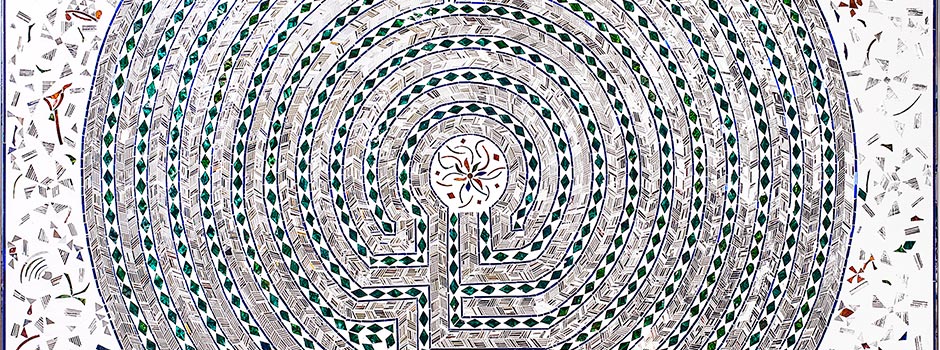
ART FAIR (Nov 8-11, 2018) The Third Line at Art021 Shanghai
Oct 25, 2018 Art Event
On this occasion, The Third Line brings a diverse presentation of practice and discourse from the MENASA region with works by Ala Ebtekar, Amir Fallah, Farah Al Qasimi, Monir Shahroudy Farmanfarmaian and Rana Begum.
Drawing references from history, science, and philosophy, Ala Ebtekar’s multidisciplinary practice incorporates an array of media, from 19th century cyanotypes, to installation, photography, and sculpture. The painted cosmos of Ala’s Azymuth (2017) invokes a cosmic plane in the pinpricks of faraway stars, as captured by the NASA/ESA Hubble Space Telescope. Rather than being painted on by the artist’s hand, the series involves a technique of exposing cyanotype to either sun or starlight to activate its photochemical surface. Past and present collide in Ala’s work, to draw attention to the manmade construction of the universe.
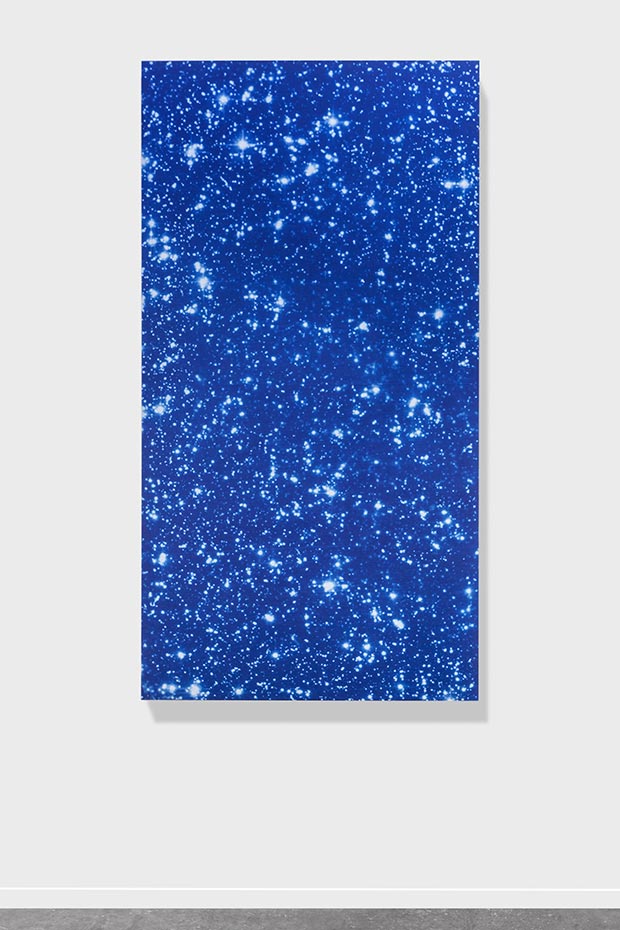 Ala Ebtekar, Azymuth, 2017, Cyanotype exposed by sunlight on canvas, 182.9 x 91.4 cm / Courtesy of The Third Line and the artist
Ala Ebtekar, Azymuth, 2017, Cyanotype exposed by sunlight on canvas, 182.9 x 91.4 cm / Courtesy of The Third Line and the artist
Amir H. Fallah’s works present a critical observation of the construct of portraiture by dismissing the essential identifiers such as race, age or gender. Amir invites the viewer to decipher clues that reference the subject’s roots and cultural heritage by surrounding his subject with an assortment of items, primarily personal belongings and memorabilia. In Happiest Place on Earth (2017), the subject is surrounded by a Mickey Mouse, Christmas lights, a blanket and a smiley face balloon.
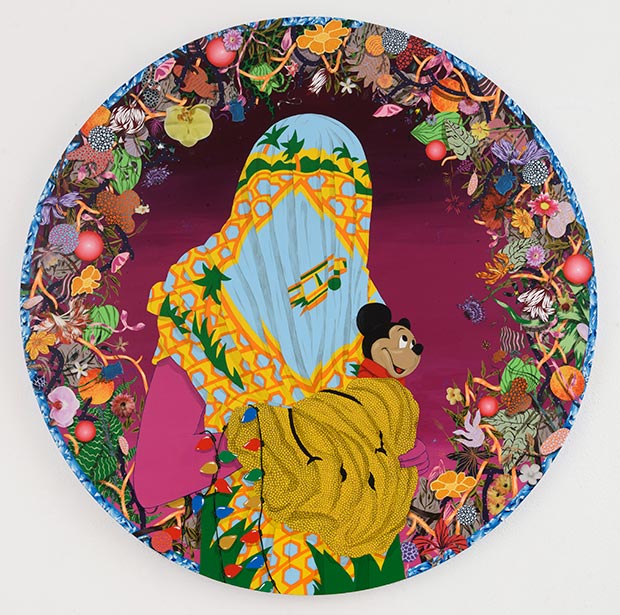 Amir H. Fallah, Happiest Place On Earth, 2017, acrylic, colored pencil and collage on canvas, 152cm in diameter / Courtesy of The Third Line and the artist
Amir H. Fallah, Happiest Place On Earth, 2017, acrylic, colored pencil and collage on canvas, 152cm in diameter / Courtesy of The Third Line and the artist
Farah Al Qasimi’s practice over the years has moved fluidly between private and public spaces, but the content has primarily remained focused on locating the fantastic in the everyday. From her series Coming up Roses, House Plant (2016) and M Napping on Carpet (2016) explore ideals of beauty, femininity and desire. The photographs develop a performative vocabulary exploring the universal quest for independence and the unease of women entering adulthood.
 Farah Al Qasimi, M Napping on Carpet, 2016, Archival inkjet print, 70 x 93 cm / Courtesy of The Third Line and the artist
Farah Al Qasimi, M Napping on Carpet, 2016, Archival inkjet print, 70 x 93 cm / Courtesy of The Third Line and the artist
Monir Shahroudy Farmanfarmaian‘s practice pairs an exploration of geometric forms with her long-standing interest in architecture. In her meditative Maze series, Monir uses her signature mirror and reverse glass painting technique to create labyrinths in various geometric shapes with floral patterns at their centre, referencing the concept of the central garden. Lesser known, Monir’s wool and naturally dyed silk carpet handwoven in Tabriz and Bijar, Iran based on a prototype drawn by the artist, presents a unique insight into her material experiments.
_2015.jpg) Monir Shahroudy Farmanfarmaian, Untitled (Maze), 2015. Mirror and reversed glass painting on plaster and wood, 135 x 135 cm / Courtesy of The Third Line and the artist
Monir Shahroudy Farmanfarmaian, Untitled (Maze), 2015. Mirror and reversed glass painting on plaster and wood, 135 x 135 cm / Courtesy of The Third Line and the artist
_1978.jpg) Monir Shahroudy Farmanfarmaian, Untitled (C7), 1978. Naturally dyed silk and wool (40 rows 600 x 870 knots), 99 x 149 cm / Courtesy of The Third Line and the artist
Monir Shahroudy Farmanfarmaian, Untitled (C7), 1978. Naturally dyed silk and wool (40 rows 600 x 870 knots), 99 x 149 cm / Courtesy of The Third Line and the artist
Minimal in their formal language, Rana Begum’s vertical bar works draw their inspiration from repetitive geometric patterns found within Islamic art and urban architecture. Resulting from light’s interplay with color and form, their geometrical complexity reveals itself as the viewer shifts from one side of the work to another.
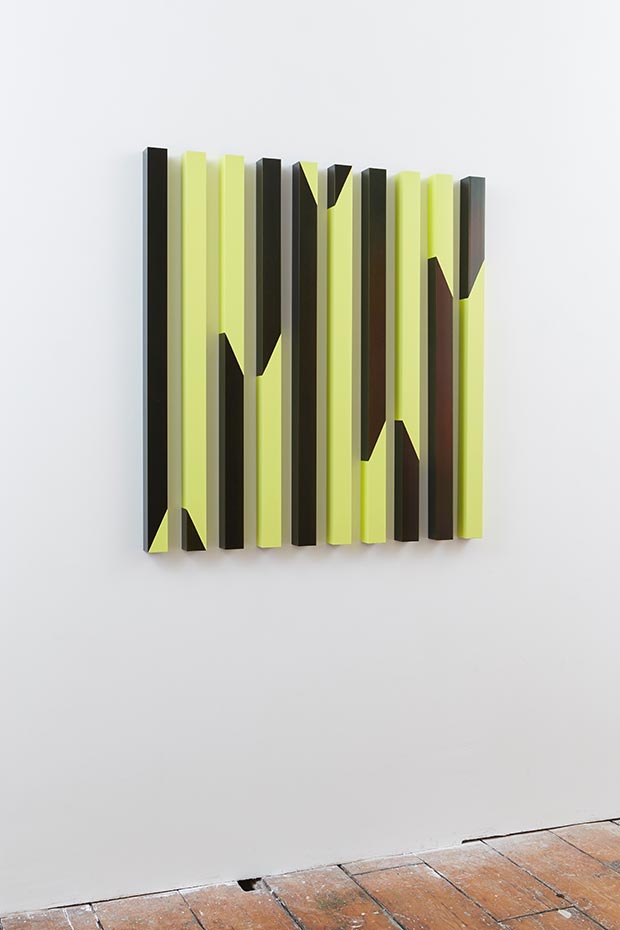 Rana Begum, No-739, 2017, Black amethyst on aluminum, 100 x 95 x 5 cm / Courtesy of The Third Line and the artist
Rana Begum, No-739, 2017, Black amethyst on aluminum, 100 x 95 x 5 cm / Courtesy of The Third Line and the artist
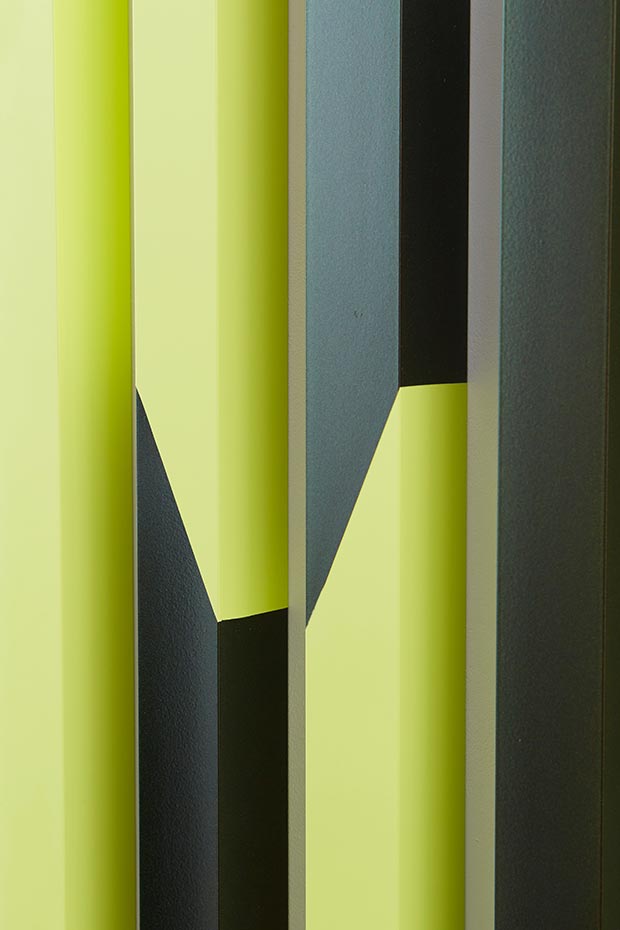 Rana Begum, No-739, 2017, Black amethyst on aluminum, 100 x 95 x 5 cm, detail / Courtesy of The Third Line and the artist
Rana Begum, No-739, 2017, Black amethyst on aluminum, 100 x 95 x 5 cm, detail / Courtesy of The Third Line and the artist
Comments
Add a comment